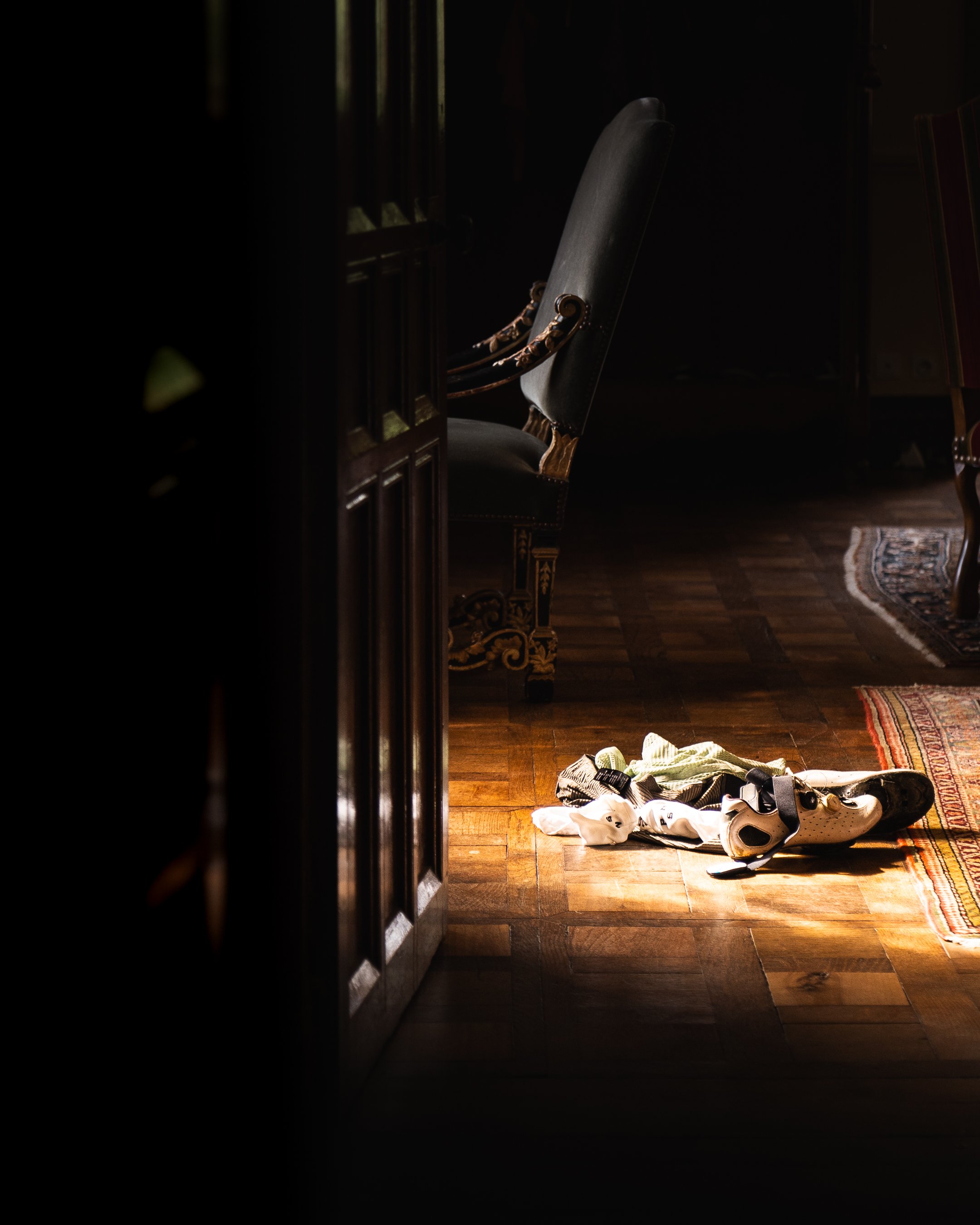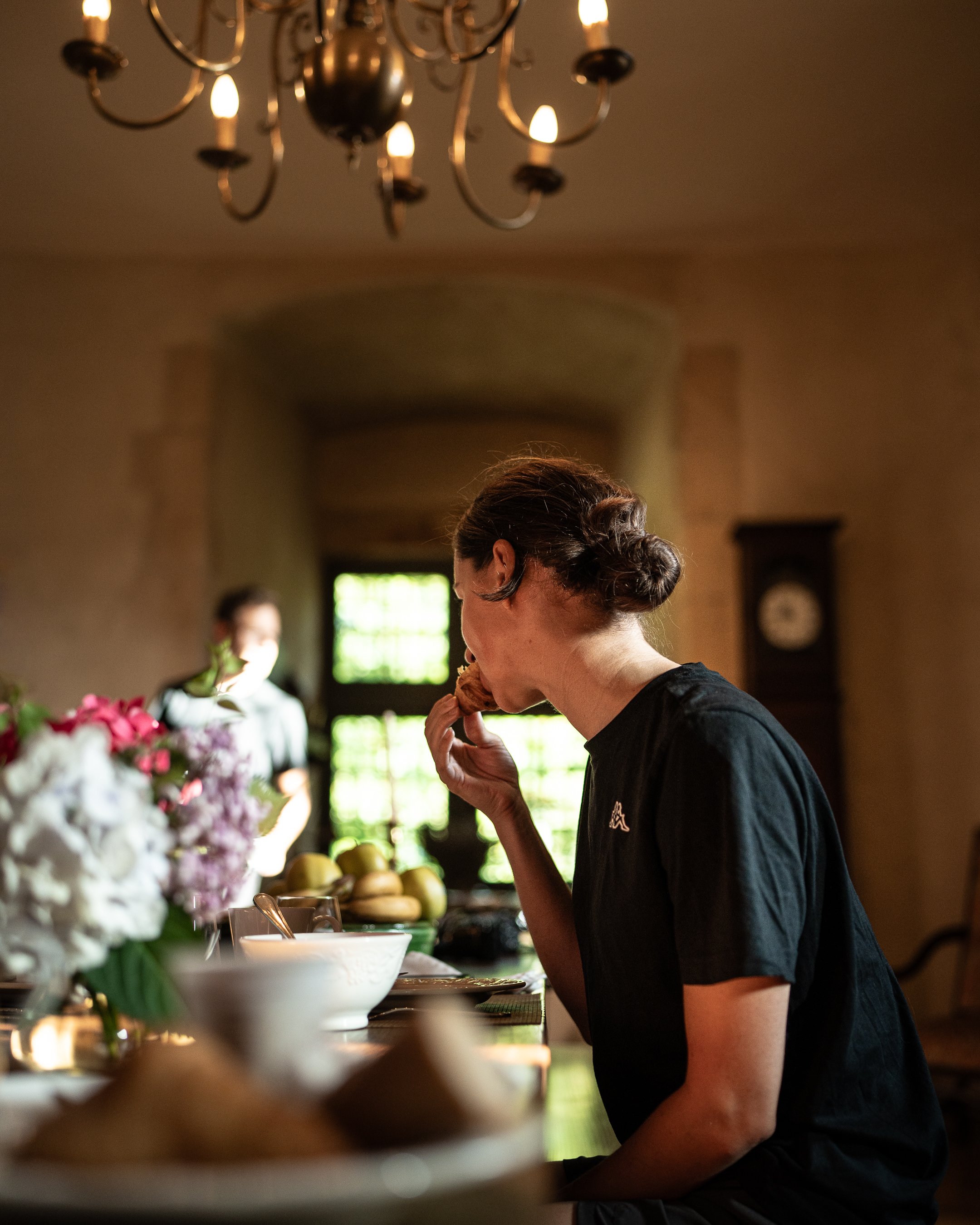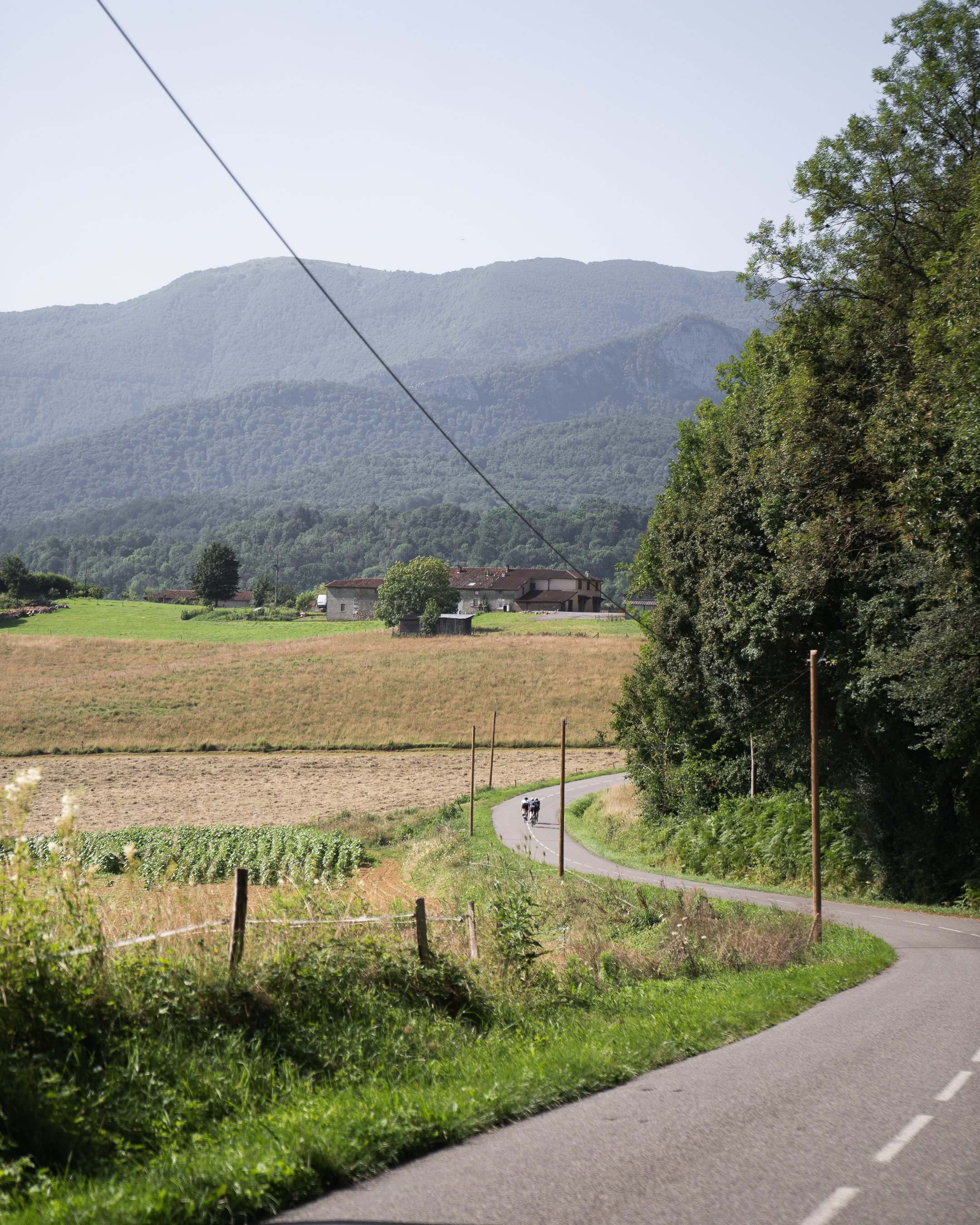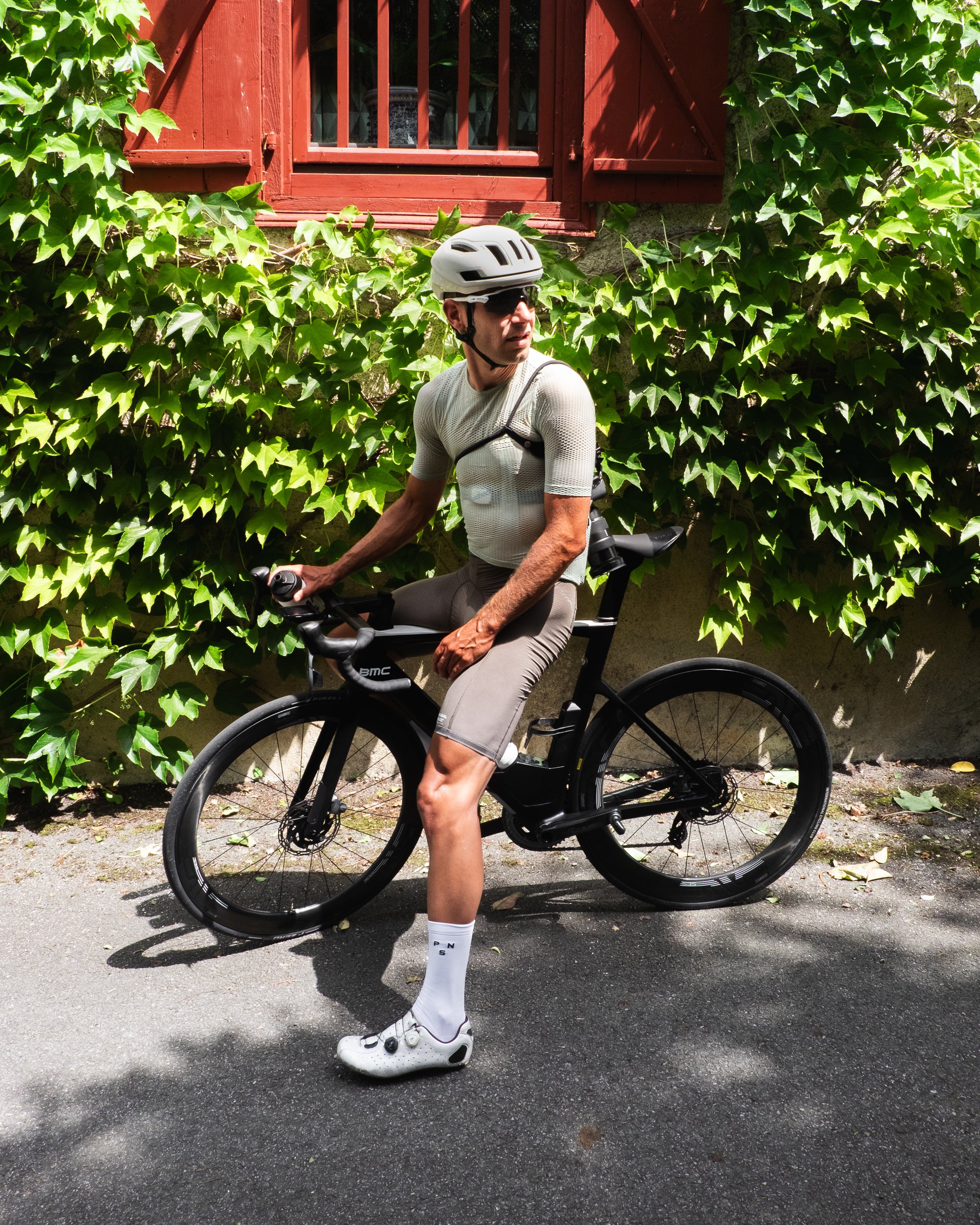Chateau Saint Martory: Where French Renaissance Meets cycling the french Pyrenees
Last summer, I went on a trip that was refreshingly different from my usual cycling-related ones. Nestled at the serene base of the French Pyrenees, I stayed at a chateau that wasn't just another accommodation used to host cyclists. It certainly wasn’t! This experience was truly something extraordinary! More than just a place to sleep, eat, and go riding, I would describe Chateau Saint Martory more like a portal to an era of Renaissance elegance, set against the backdrop of the French side of the Pyrenees.
Staying in the chateau felt like stepping into history, where the beauty of the past intertwined very well with our modern sport of cycling. And, the rides we went on were really so good! I’ve been climbing Col de Menté, Col de Portet-d'Aspet, Col de La Core, and The Superbagnères – each known from Tour de France's stages over time.
Consider this blog post to be more than just a recap of this trip I made. It’s more like an exploration into the unique world of Chateau Saint Martory, where the epicness of the Pyrenees meets a unique place to ride from. So, that being said, let me delve into the details revealing the allure and charm of this exceptional spot located in the South of France.
the full context
The story of how we stumbled upon Chateau Saint Martory unfolds at Eurobike last year. Amidst the bustling atmosphere of cycling enthusiasts gathering to see the latest gear being introduced, my friend Ruben found himself in conversation with Jean-François Delort. As fate would have it, Jean-François is the proud owner of Chateau Saint Martory. Intrigued by Ruben’s passion for combining cycling with photography, Jean-François made Ruben an offer he couldn’t resist: to gather some friends to come over and enjoy the chateau’s unique ambiance for a week.
So, the plan was set in motion. After I also got introduced to Jean-François through an online meeting, we pinned down the dates and also invited Kimberley, Ruben's girlfriend, and our friend Stijn to join us for what promised to be an extraordinary week of cycling and beyond.
And then, there we were, the four of us, travelling towards Toulouse first, with our sights set on the picturesque town of Saint Martory. This time, finding our accommodation was easy. Simply searching for Saint Martory in Google quickly reveals that the Chateau is the crown jewel of this quaint village in Southern France.
As we approached the gate and followed the winding white gravel driveway, the grandeur of the chateau began to unveil itself. Parking in front of this impressive building hit us. Staying here promised not to be just ticking off another item on our bucket list. This promised to be more like a once-in-a-lifetime experience.
discovering Chateau Saint Martory
Perched elegantly on the banks of the Garonne, with the Pyrenees in the background, Chateau Saint Martory is just one big setting that speaks to your imagination. A beautifully restored castle surrounded by 40 hectares of lush woods and many historical rural buildings that all have their own function.
The Chateau, renowned for its 7 exquisite bedrooms is, besides a preferred location for weddings and seminars, also a prime spot for groups of cyclists from all over the world. I mean, the proximity to legendary Tour de France cols like Portet d'Aspet, Aspin, Menté, and Tourmalet can turn every ride into a brush with cycling royalty.
Jean-François told us that 2022 marked a new chapter for the Chateau, as they started partnering with Cynisca Cycling, a pioneering American /French women's pro cycling team. Hosting their professional service course at the Chateau underscores the commitment to cycling here. The team’s European base, complete with secure bike storage and top-notch workshop facilities, was at our full disposal, elevating our experience to professional standards.
This stay was just one big intriguing blend of luxury and comfort. From the warm welcome by our host Deborah to the exquisite meals prepared by our private chef Otavio, and the leisurely moments by the pool, every aspect of our stay was a testament to the Chateau's unique charm. It's a place where the worlds of cycling, fine dining, and luxury living intertwine seamlessly, offering a top notch experience for cyclists who seek both adventure and relaxation.
sleeping like royalty
The chateau is home to seven unique rooms, each with its own carefully selected antiques and art. The fusion of classical elegance and contemporary design in these spaces reflects the owner's eclectic tastes for sure. Each suite, with its distinct history and style, is incredibly spacious (20 to 40 m²), has its own en suite bathroom, and offers breathtaking views of the park, woods, and the distant Pyrenees.
The living areas, too, are like stepping through different periods of history. From the original guardsroom to the vividly transformed 19th-century living and different dining areas, every corner in this maze of rooms and hallways provides a window into the past. One of the highlights, is the modern games room located under the rooftop. Here, the historical ambiance is playfully juxtaposed with contemporary elements, countless options for reading and a classic billiards table, offering a unique blend of past and present.
In addition to the grandeur of the chateau, the charming farmhouse also offers three guest rooms, perfect for those seeking a touch of rustic elegance. And, not to be overlooked, the gatehouse, with its roots in the 1850s, has been beautifully restored as well. Known as La Conciergerie and located at the estate's entrance, it features a welcoming lounge, a fully equipped kitchen, and a spacious 70 m² suite.
During our stay, while we were comfortably nestled in the chateau's luxurious embrace, we also had been shown around these other unique spaces. One thing is clear to me – Chateau Saint Martory truly excels at hosting groups of any size, providing diverse yet equally luxurious experiences. Whether in the stately chateau, the farmhouse, or the gatehouse, every guest is guaranteed a stay that’s not just luxurious but steeped in memorable elegance and history.
the Cynisca Cycling Team and the Service Course
As already mentioned, the Chateau also partners with Cynisca Cycling, an emerging American women’s pro-team dedicated to advancing women's cycling in the United States. In collaboration with USA Cycling and other independent stakeholders, Cynisca focuses on identifying and nurturing young talent, guiding them towards the elite ranks of professional cycling.
This partnership has transformed Chateau Saint Martory into Cynisca's European base. And in line, a professional Service Course has been established at the Chateau, tailored to meet the team's high standards. This includes a secure bike storage and a top-of-the-line workshop complete with state-of-the-art tools, which areall available for your own use.
a Culinary Experience to Savor
Another luxurious aspect of booking a stay at Chateau Saint Martory is the extraordinary culinary experience. Each morning, as I descended the staircase, the aroma of freshly baked bread and fried eggs wafted through the air. A gentle call for the fact that breakfast was served in the historic guardsroom. Breakfast with a spread rich and varied fueling us up for our rides.
Yet, the true culinary zenith was our daily dinners, masterfully crafted by Otavio, our private chef. His expertise in blending local gastronomy with his own personal touch and techniques was evident in the menu options he presented to us via WhatsApp each day. Only thing was that making a choice was delightfully challenging. Still, every meal proved to be a perfect choice, as we enjoyed multiple courses followed by the most incredible desserts.
The experience was further enriched by a thoughtful selection of wines from the chateau’s own wine cellar, each handpicked to complement the menu. These fine wines just add that extra bit of sophistication to the dining experience.
As during dinner the shadows lengthened and eventually the night fell, we would find ourselves lingering over an exquisite dessert, sipping espresso under a starlit sky. The conversations flowed as effortlessly as the wine, filled with reflections on our day's ride and anticipation for the next.
The combination of Otavio's culinary artistry and the chateau's enchanting ambiance made every meal an unforgettable part of this extraordinary chateau life.
about the riding
You might be wondering: amidst all this royal experience, what about cycling? Well, that’s an excellent question!
Within reach from the chateau base, you have access to legendary Tour de France climbs, including Portet d'Aspet, Aspin, Menté, Port de Balés, Peyresourde, and even the famed Tourmalet. The diversity of the terrain is remarkable – from these iconic climbs to rolling valley terrain and flatter roads along the river Garonne. It's no surprise that the Cynisca team has chosen this as their base; riding here is great and training can be very effective.
One thing that struck us immediately and what I would like to underscore is the tranquility of this area. Even in July, at the height of the summer season, these roads were blissfully free of traffic, campers, and motorcyclists. This peacefulness is perhaps the most significant advantage of the Pyrenees over other European mountain ranges, especially for those who prefer quieter rides like I do.
Another very important aspect is that cycling here is particularly group-friendly, accommodating various skill levels. If you've ever waited at a chilly Alpine summit for the last rider to make it to the top, you'll appreciate the Pyrenees even more. The climbs here are shorter, the summits less daunting, and the conditions less extreme, meaning less waiting time for slower riders. That’s what makes Chateau Saint Martory an even more fantastic location for group cycling trips.
With that said, let me now dive into the details of some of the specific rides we went on...
Col de Menté - 120 KM / 2,300 HM
Our first real ride aimed to explore the Col de Menté. On paper, I crafted a 120-kilometer ride with around 2,300 meters of elevation gain. Seemed challenging but manageable. Yet, what we hadn't accounted for was the relentless heat that would test our limits beyond expectations.
The ascent of Col de Menté presented a 9 kilometers climb at an average gradient of 8.8%. As we pedaled upward, the climb's steepness was tempered by the nice scenery that unfolded around each bend. Lush greenery of the Pyrenees with an occasional glimpses of distant peaks.
The higher we got, the more the oppressive heat of the valley below seemed to fade, replaced by a more temperate air. A welcome relief, allowing us to push on with renewed vigor. However, the descent towards Cierp-Gaud quickly reminded us of the day's challenge. As we swooped our way down, my Wahoo captured the reality of the climate we were heading back into – the valley temperature exposed us to a blistering 47°C (116°F). The contrast between the cooler mountain air and the heat of the valley below underscored the sometimes extreme conditions that define cycling in the Pyrenees.
Those final 20 kilometers were a true test of endurance. The intense heat enveloped us, making every pedal stroke a battle against ourselves. I have tackled numerous 120-kilometer rides, but this one, under the fierce grip of the Pyrenean sun, was undoubtedly the most grueling I've ever experienced. It was a ride that not only challenged our physical stamina but also our mental fortitude, pushing us to the very edge of our cycling capabilities.
This is what cycling in the Pyrenees can be like. On this day, it felt as if the tarmac was nearly melting, but despite the intense heat, I must say it was an incredibly memorable ride.
Riding with Cynisca Cycling - 100 KM - 1.400 hm
In my last post, I hinted at a fascinating side story involving the Cynisca Cycling UCI Pro Women's Cycling Team and their connection to Château de Saint-Martory. On this ride, we joined them on one of their training rides. The loop spanned 100 kilometers, weaving through the stunning countryside east of the château. Their session was a blend of various cycling drills – lead-out sprints, mastering the art of 'sticky bottles,' uphill efforts, and pushing deceptive fake flats.
I really liked this beautiful ride on varied terrain. In terms of the elevation profile, it was a little bit like the Belgian Ardennes, but with the added allure of Southern France's charm – picturesque small villages dotting the route. It was as if we were gliding through a series of postcards, each scene blending with the unique, sun-drenched charm of the French countryside.
Col de Portet-d'Aspet and col de La Core - 140 KM / 2,600 HM
For us, this ride was a paradox, oscillating between being epic and, frankly, pretty challenging. Now, in contrast to the first day, this day unfolded into a mix of fog, drizzle, and intermittent rain. Yet, strangely, it felt perfect in its own way.
Our ride towards the Col de Portet-d'Aspet, categorized as a 2nd category climb in the Tour de France, started under relatively dry conditions. However, the slightly damp road surface hinted at the challenging weather we were about to encounter. During the 9 kilometers up, a light fog enveloped the landscape, blurring the line between the road and the lush greenery of the surrounding forest. The fog thickened into a gentle drizzle, creating a mystical atmosphere that I kinda liked. The road wound upward through dense woodland, each turn revealing a new, mist-shrouded road up in front.
The real test of this climb are the final 5 kilometers, where the gradient averaged to 9%. As we crested the summit, the descent was actually a swift and smooth journey back into the valley. The fog lifted, the drizzle ceased, and we were greeted by dry roads and clearer skies. A testament to the ever-changing conditions that define the specific character of this mountain range.
Leaving Les Bordes sur-Lez behind, we set our sights on the Col de La Core, a 1st category climb. Again, the skies above thickened into dense clouds. The higher we got, the more the world around us seemed to vanish into the cloud cover, reducing visibility to a mere few meters at the peak. Now, the descent was a cautious affair; with visibility limited and the road slick from moisture, we took each curve with care. In Saint Girons we treated ourselves for a bakery stop before hitting the final stretches back to the comfort of Chateau Saint Martory.
Although this was 'only' a 138 kilometers ride, we tackled 2,600 meters of altitude. But the typical Pyrenees weather conditions transformed it into a more demanding one. Still, the satisfaction of completing the ride in such conditions was a reward in itself.
Luchon Superbagnères - 90 km / 2,500 hm
For this ride, we ventured first to Bagnères-de-Luchon. This quaint town, nestled on the Spanish border at the foot of the central Pyrenees, was the starting point of this really nice ride.
Upon reaching there, Jean-François introduced us to Christian, a local legend and our guide for the day. Christian proposed a unique 50-kilometer loop, taking us through one of the rare border crossings into Spain. Our route included a well-deserved coffee stop in Bossòst, which also marked the start for the Col du Portillon ascent (8.5 km at 7%). This climb brought us back into France at its summit.
After descending from Col du Portillon, we faced the day’s pièce de résistance: the climb to Luchon Superbagnères. Extending over 17 kilometers with an average gradient of 7%, the road to its 1,800-meter summit, lined with ski pistes, was a really nice climb! It starts gently, except for a short, intense 12% section. The road follows a river upstream, leading you to the real thing – its final 9 kilometers with 12 switchbacks, serving you stunning open views with each turn.
Unlike our usual practice of skipping mountaintop restaurants due to their typically subpar food and exorbitant prices, the summit of Superbagnères presented an exception. While the "Grande Hotel" of 1922 might seem tempting from a distance, we discovered a hidden gem just 200 meters down a gravel path – a converted church turned into a restaurant called La Chapelle. This place, with its excellent menu, reasonable pricing, spacious veranda, and panoramic views, is a delightful surprise and a highly recommended stop!
Riding Superbagnères was like uncovering a forgotten chapter of the Tour de France, a climb that once basked in the glory of the 1989 race. As Christian shared, the locals of Luchon have long been hoping for a Tour de France comeback, and after experiencing this climb, I wholeheartedly agree. Superbagnères is not the typical Pyrenees climb I think; it’s a really quiet climb more like you find them in The Alps, celebrating the beauty and variety of riding here in the Pyrenees.
the visual story
While I pride myself on my ability to write well, as a photographer, I believe some stories are best told visually. To that end, here I share a curated collection of our cycling snapshots with you, capturing the very essence of riding from Chateau Saint Martory. I think you need only one look to feel the great vibes of the Pyrenees around this place, right?
So, besides the Chateau Saint Martory and its experience, let these snapshots from our rides be a gentle invitation to treat yourself with others to one of the most special cycling getaways you will ever go on!





































































